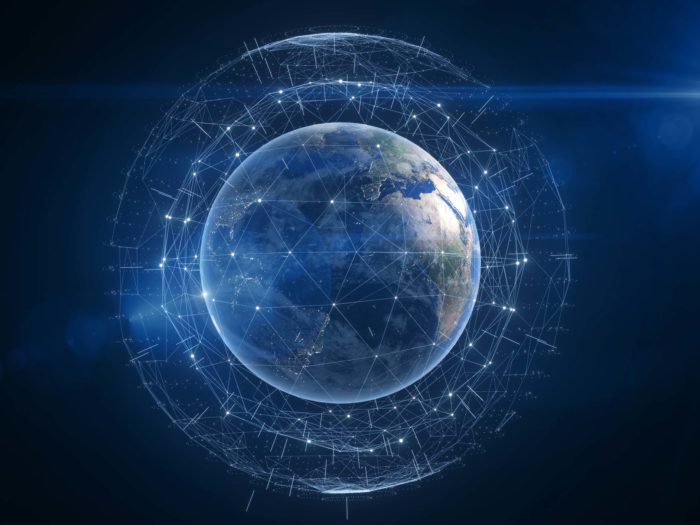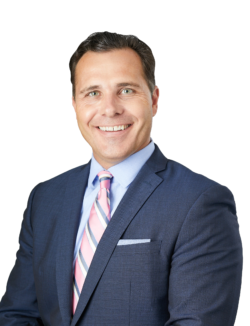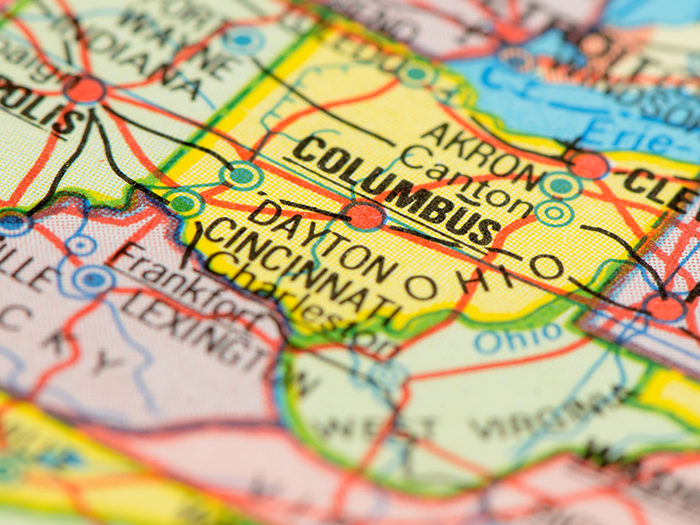With Its New Global Insights Center, The Hartford Aims to Equip Stakeholders to Manage Advancing Risk

When looking to expand in various countries or regions throughout the globe, businesses and underwriters must assess the specific risk exposure that lives within those borders. Additionally, the globe has borne witness to several debilitating trends that have had a universal impact. These include the COVID-19 pandemic, supply chain crises and global inflation, and most recently, Russia’s invasion of Ukraine.
In order to assist businesses and underwriters, The Hartford launched a new Global Specialty Insights Center to share the company’s robust in-house global research with internal and external stakeholders.
“The Global Specialty Insights Center has two mandates,” said Shailesh Kumar, The Hartford’s head of the Global Specialty Insights Center.
“One is to help internal underwriters assess the world, the economic landscape, geopolitical landscape [and] we also are working with clients who have international business exposure to speak to them about what they may be facing or what they could be facing in a lot of the countries in which they operate or in which they may be looking to expand.”
The impetus for the venture was a convergence of disruptive global trends, followed by Russia’s invasion of Ukraine.
“Once Russia-Ukraine hit, we realized we needed a unit like The Hartford Global Specialty Insights Center, and to do two core missions, which is advise and consult our internal stakeholders — underwriters and business leaders — on those geopolitical and economic issues and drivers of their business and help with overall decision making,” said Adrien Robinson, The Hartford’s head of global specialty. “And what a great opportunity at the same time to extend some of those services to our customers.”
What to Expect from The Center
The Center leverages its vast subject matter expertise to provide thought leadership and white papers.
“We have a team of economists and analysts who understand credit conditions and economic outlooks as well as geopolitical factors in a lot of these markets to help advise underwriters as they’re undertaking the risk,” Kumar said.
It also leverages an area of expertise particular to insurers.
“As their current or future potential insurer, we are uniquely positioned to work with them to discuss risk, whether it be macroeconomic, geopolitical, global trends, country-risk, or even sectoral concerns,” Kumar said.
“So we can have these very close conversations with them. We can help address a lot of their needs that others may not be positioned to do.”
And, he continued, it is a value-added service. “We are providing this service, and engaging with our policy holders at this level and on these issues, because we feel it’s the best tool they can use to help mitigate their risk on the back of it. We also of course have a massive insurance firm who can then give them the solutions to help mitigate those risks through different products.”
A core element of the Center’s work is a scoring system that uses proprietary models to grade each country on a variety of relevant dimensions.
“These scores help inform underwriters of the potential risk in a country for a given subject, and in some cases also help determine how much risk to take,” Kumar said.
“The risk factors for which we generate scores include the potential for sovereign default, macroeconomic conditions, banking sector stress, the potential for terrorism to occur, or for a rise in strikes, riots, and civil commotion. We also have scores to ascertain the potential for war to occur, or for a government to expropriate assets or make it difficult to repatriate gains.”
Why Now?
These risk areas are not entirely new, but their causes and impacts may be.
“The current inflationary environment around the world is well socialized at this point, but what may not be fully appreciated is what the fiscal and monetary response could be to that by different countries and how that could affect the risk environment,” Kumar said.
And not every business will be impacted the same way.
“If your business is really driven by the cost of goods such as food or fuel, that’s an inflationary pressure that could abate if a favorable resolution were to come to pass with Russia-Ukraine, and certainly if the supply chain frees up,” Robinson said.
“But if your business has most of its underlying cost in labor, those are likely to be more systemic and permanent, because you can’t really turn back the cost of labor and the freeing up of supply chains doesn’t really help with that.”
Political violence is another risk with a long history.
“We’re also very much focused on the potential for political violence,” Robinson said. “We’ve written extensively about what we think could drive civil unrest, what economic conditions drive rioting and rebellion, and what are some of the signposts individuals should be looking at as future indicators of potential for increased violence around the world.”
While such violence is nothing new, the contemporary causes and manifestations may be.
“What’s slightly different at the moment is that there’s certain economic pressures building in certain parts of the world,” Kumar said.
“Part of it’s pandemic, part of it’s because of the fiscal response we saw post-pandemic, and part of it is inflation/supply chain-related. But all of those are coming together to create greater potential for political violence in select emerging markets.”
Other global risks have evolved even more.
“There’s essentially a new exposure or an exposure that now has radically heightened awareness, and that is confiscation,” Robinson said.
Companies have long been aware of that risk, especially in countries with authoritarian regimes. But Robinson says that Russia’s invasion of Ukraine has heightened that risk considerably.
“There’s obviously the physical war, which propagated a secondary conflict, which is a cyber war, more of a virtual war, which provoked a third dimension, which is an economic war,” Robinson said. “And the economic sanctions were so severe and so globally oriented against Russia, that Russia countered by confiscating various assets including fleets of planes and entire businesses.”
Kumar points out another known risk with a new look.
“Depletion of dollar reserves, and a consequential government or central bank response via capital controls at times makes it harder for investors to get dividends or proceeds out of a country,” he said.
Previously, this was related to economic turmoil.
“What’s changing, or what could change in the future, is the weaponization of capital as a political or foreign policy response, preventing money from leaving a country as retribution for sanctions or military conflict,” Kumar said.
“So, for example, if you’re invested in a country, even if they have ample dollars or they have the ability to repatriate your money, there is the risk — or it could happen in the future — of them making it very hard for you to get your money out as a means of punitive action against investors.”
Another emerging aspect of that risk is sovereign distress.
“For a number of years, we knew sovereign risk or the risk of default in certain parts of the world was there and that businesses should be aware of it,” Kumar said.
“What’s changed slightly is, as capital flows reorient themselves, as the globalization begins to change, as high oil prices persist, and as debt levels rise alongside and increase in the cost to service debt, then the sovereign ability of certain countries could erode. This is a risk that we’re flagging that businesses should be aware of in certain parts of the world.”
Moving Forward
The Center’s experts see a changing world order as the most prominent long-term consequential trend, as the U.S.-led unipolar world, which followed the bi-polar world of the Cold War, is supplanted by something new.
“We are now on the precipice of a multi-polar world, where it’s not going to be the U.S. and China, which has often been looked upon as the next great power, but other powers are likely to emerge also,” Kumar said, citing as examples India, Turkey, Saudi Arabia, and perhaps Russia.
“These are all varying powers from the economic lens, but they’re all carving out a power center for themselves around the world. And Russia-Ukraine, in part, has accelerated this shift in dynamic.”
With a changing world order, comes changing global risk.
“The increase in uncertainty, the pickup in turmoil and geopolitical risk, has necessitated an increased awareness for businesses to appreciate that risk and how to analyze that risk,” Kumar said.
“It’s not that geopolitical risk didn’t exist 20 years ago. It did; it was just different.” &












